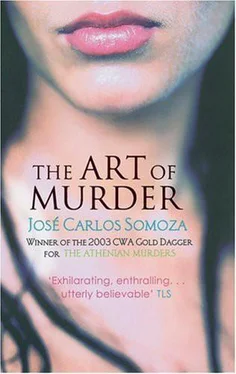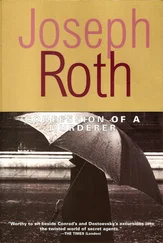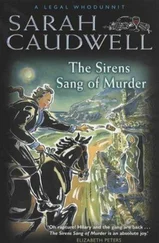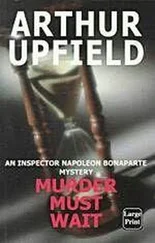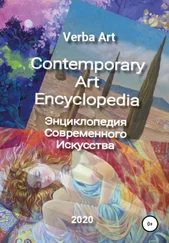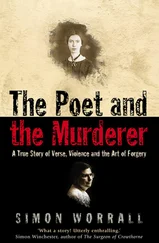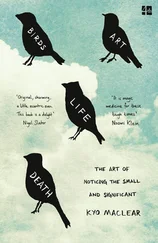Jose Somoza - Art of Murder
Здесь есть возможность читать онлайн «Jose Somoza - Art of Murder» весь текст электронной книги совершенно бесплатно (целиком полную версию без сокращений). В некоторых случаях можно слушать аудио, скачать через торрент в формате fb2 и присутствует краткое содержание. Жанр: Триллер, на английском языке. Описание произведения, (предисловие) а так же отзывы посетителей доступны на портале библиотеки ЛибКат.
- Название:Art of Murder
- Автор:
- Жанр:
- Год:неизвестен
- ISBN:нет данных
- Рейтинг книги:4 / 5. Голосов: 1
-
Избранное:Добавить в избранное
- Отзывы:
-
Ваша оценка:
- 80
- 1
- 2
- 3
- 4
- 5
Art of Murder: краткое содержание, описание и аннотация
Предлагаем к чтению аннотацию, описание, краткое содержание или предисловие (зависит от того, что написал сам автор книги «Art of Murder»). Если вы не нашли необходимую информацию о книге — напишите в комментариях, мы постараемся отыскать её.
Art of Murder — читать онлайн бесплатно полную книгу (весь текст) целиком
Ниже представлен текст книги, разбитый по страницам. Система сохранения места последней прочитанной страницы, позволяет с удобством читать онлайн бесплатно книгу «Art of Murder», без необходимости каждый раз заново искать на чём Вы остановились. Поставьте закладку, и сможете в любой момент перейти на страницу, на которой закончили чтение.
Интервал:
Закладка:
'Art is also destruc… destruction… in the past that's all it… was. In the caves they painted what… what they wanted to sa
… sacri… sacri…'
Whirring sounds. A brief silence. The policeman pressed the pause button.
'He stopped recording here, probably to make her repeat the phrase.'
The next part was clearer. Each word was pronounced slowly and clearly. What came over from this new declaration was a desperate attempt by the speaker not to get it wrong. But something else, that could well have been terror, broke through the icy pauses: the caves they painted only what they wanted to sacrifice… Egyptian art was funerary art… Everything was dedicated to death… The artist is saying: I have created you to hunt and destroy you, and the meaning of your creation is your final sacrifice… The artist is saying: I have created you to honour death… Because the art that survives is the art that has died… where beings die, works endure…
The policeman switched off the recorder.
'That's all there is. We're analysing it in the laboratory, of course. We think he did it in the van with the windows closed, because there's not much background noise. It was probably a written text they forced her to read.'
An intense silence followed these words. It's as if by hearing her, hearing her voice, we've finally understood the horror of it all, thought Bosch. He was not surprised at this reaction. The photos had impressed him, of course, but to some extent it was easy to keep your distance from a photo. In his days as a member of the Dutch police, Lothar Bosch had developed an unexpected coldness when confronted with the ghastly red phantoms that appeared in the darkroom. But hearing a voice is very different. Behind the words lay a human being who had died a horrible death. The figure of the violin player appears more clearly when we hear the violin.
To Bosch's eyes, accustomed to seeing her posing in the open air or inside rooms and museums, naked or semi-naked and painted in many different colours, she had never been a 'little girl' as the policeman had called her. Except once, two years earlier. A Colombian collector called Cardenas with a somewhat obscure past had bought her in The Garland by Jacob Stein. Bosch had been concerned what might happen to her in that hacienda on the outskirts of Bogota while she was posing eight hours a day for her owner wearing only the tiniest of velvet ribbons round her waist. He had decided to give her extra protection, and summoned her to his offices in the New Studio in Amsterdam to tell her this. He still had a clear memory of it: the work of art came into his office dressed in T-shirt and jeans, her skin primed and eyebrows shaved off. She was wearing the customary three yellow labels, but apart from that had not been painted at all. She held out her hand: 'Mr Bosch,' she said.
It was the same voice as the girl in the recording. The same Dutch accent, the same smooth quality. Mr Bosch.
With a simple gesture and these few words, the canvas had been transformed into a twelve-year-old girl right before his eyes. It happened in a flash. Bosch's mind was flooded with images of his own niece, Danielle, who was four years younger than Annek. All of a sudden he realised he was allowing a 'little girl' to go and work more or less naked in the house of an adult male with a criminal record. But the giddiness soon subsided, and he became neutral and level-headed once more. She's not a girl, she's a canvas, of course, he told himself. As it turned out, nothing had happened to the work of art in the Bogota hacienda. Now though, someone had cut her to pieces in a Viennese wood.
Listening to the recording, Bosch had been recalling the gentle pressure of her right hand, and the words 'Mr Bosch' pronounced with such unconscious delicacy. Two different sources for his impressions, but they gave the same reply: softness, warmth, innocence, softness. ..
The policeman was leaning forward, as if expecting him to say something. 'Why would he leave a recording?' Bosch asked.
'This kind of madman wants the whole world to hear how he sees things,' the policeman said. 'Has the van been found yet?' Miss Wood wanted to know.
'No, but it soon will be, if he hasn't got rid of it somehow. We know the make and the licence number, so…' 'He was very clever,' Bosch said. 'Why do you say that?'
'All our vans have a tracking device. A GPS satellite system which transmits the position of the vehicle at all times. We installed it a year ago to guard against the theft of valuable works of art. On Wednesday night we lost the signal from this van soon after it left the museum. He must have found the device and deactivated it.'
'Why did you take so long to get in touch with us? You only contacted us on Thursday morning.'
'We didn't realise we had lost the signal. The tracking device sets off an alarm if the van leaves the pre-established route, if there's an accident, or if it's stationary for a long while before reaching the hotel. But in this case, the alarm did not go off, and we did not realise we could not pick up the signal.'
'Which means the guy knew about the device’ the policeman observed.
That's why we thought Oscar Diaz must have been in on it, or have murdered her himself.'
'Let's see if I've got this straight. Oscar Diaz was the person responsible for taking her to the hotel. He was some kind of security guard employed by you, is that right?' 'Yes, one of our security agents,' Bosch agreed.
'But why would one of your own security agents do something like that?'
Bosch looked first at the policeman, then at Miss Wood, who still sat without saying a word.
'We have no idea. Diaz has an impeccable record. If he was crazy, he managed to hide it very well for years’
'What do you know about him? Does he have family? Friends?…'
Bosch reeled off the details he had learned by heart from looking at the file a hundred times over the previous few days.
'He's single, twenty-six years old, born in Mexico. Father died of lung cancer, mother lives with his sister in Mexico City. Oscar emigrated to the States when he was eighteen. He's athletic, enjoys sport. He worked as a bodyguard for Hispanic businessmen living in Miami or New York. One of them had a hyperdramatic work of art in his house. Oscar asked for information about it, then started as a guard in small New York galleries. Then he came to work for us. We helped him get on, because he was intelligent and a hard worker. The first important Foundation work that he was security for was a Buncher shown at the Leo Castelli gallery.' 'A what?' Miss Wood explained drily.
'Evard Buncher was one of the founders of orthodox hyperdramatism, together with Max Kalima and Bruno van Tysch. He was Norwegian. During the Second World War he was arrested by the Nazis and sent to Mauthausen. He managed to survive. He travelled to London, where he met Kalima and Tanagorsky and began to paint his pictures on human beings instead of canvases. But he enclosed them in boxes. Some people say he was influenced in this by his experiences in the concentration camp.'
This woman is like a computer, the policeman thought to himself.
'They're small boxes, open on one side,' Miss Wood went on. 'The work is put inside and stays there for several hours.' She turned her head towards the wall behind her and pointed to the large photo on it. 'That's a Buncher, for example.'
The policeman had noticed it as soon as he'd arrived, and had wondered what on earth it meant. Two naked bodies painted red were crammed into a glass box, which was so small they had to cling together in a complicated knot. Their genitals were visible, but not their faces. To judge by the former, they were a man and a woman. The enormous photo filled almost the entire wall in this room in the MuseumsQuartier. So that is meant to be a work of art, the policeman thought. And anyone could buy it and take it home. He wondered if his wife would want something like that decorating their dining room. How on earth did they manage to stay in those impossibly contorted positions for such lengths of time? He recalled the exhibition he had seen that same afternoon.
Читать дальшеИнтервал:
Закладка:
Похожие книги на «Art of Murder»
Представляем Вашему вниманию похожие книги на «Art of Murder» списком для выбора. Мы отобрали схожую по названию и смыслу литературу в надежде предоставить читателям больше вариантов отыскать новые, интересные, ещё непрочитанные произведения.
Обсуждение, отзывы о книге «Art of Murder» и просто собственные мнения читателей. Оставьте ваши комментарии, напишите, что Вы думаете о произведении, его смысле или главных героях. Укажите что конкретно понравилось, а что нет, и почему Вы так считаете.
